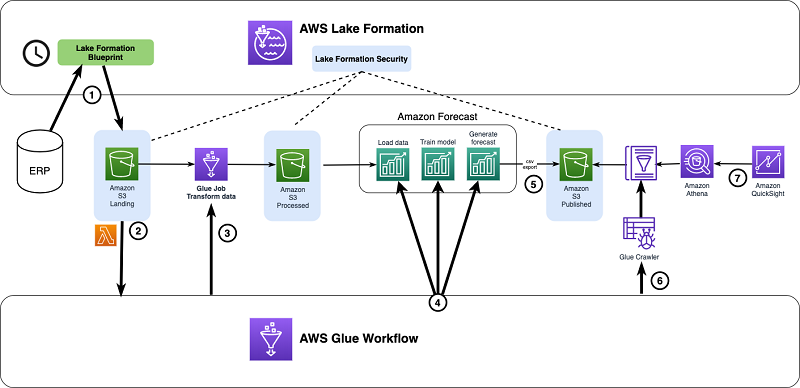
AWS Lake Formation is a service provided by Amazon Web Services (AWS) designed to simplify the process of setting up, managing, and securing a data lake. A data lake is a centralized repository that allows you to store structured and unstructured data at any scale. With a data lake, you can store your data as-is, without having to structure it first, and run different types of analytics—from dashboards and visualizations to big data processing, real-time analytics, and machine learning—to guide better decisions.
Key Features of AWS Lake Formation:
Centralized Data Storage: Lake Formation allows you to store all your data, whether structured or unstructured, in a centralized repository on Amazon S3. This includes data from databases, data streams, logs, and more.
Data Cataloging: Lake Formation provides a centralized data catalog that helps you discover and understand the data in your data lake. The catalog stores metadata about the data, such as schemas, tables, and partitions.
Data Ingestion and Transformation: The service simplifies the process of ingesting and transforming data by integrating with other AWS services like AWS Glue. You can use Glue for ETL (Extract, Transform, Load) jobs to prepare and load data into your lake.
Fine-Grained Access Control: Lake Formation offers fine-grained security controls for your data. You can manage access to specific datasets, tables, columns, and rows. It integrates with AWS Identity and Access Management (IAM) and provides centralized auditing and compliance features.
Data Governance: The service provides tools to enforce governance policies across your data lake, ensuring that the right people have access to the right data. It helps with managing data lineage, auditing access, and ensuring data security.
Integration with Analytics Services: AWS Lake Formation integrates with AWS analytics services like Amazon Athena, Amazon Redshift, and Amazon QuickSight, making it easier to run analytics on your data.
Data Sharing and Collaboration: Lake Formation supports secure data sharing and collaboration, allowing you to share data between different accounts or organizations while maintaining control over access.
Common Use Cases:
-
Data Warehousing: Combine data from various sources into a single repository for analytics.
-
Big Data Analytics: Process large volumes of data for insights using AWS analytics tools.
-
Machine Learning: Prepare data for machine learning models and make predictions on the stored data.
-
Data Governance and Compliance: Manage access control, auditing, and compliance of sensitive data.
AWS Lake Formation aims to make it easier to set up and manage a data lake with security and governance features built in, reducing the complexity and time typically required for these tasks.